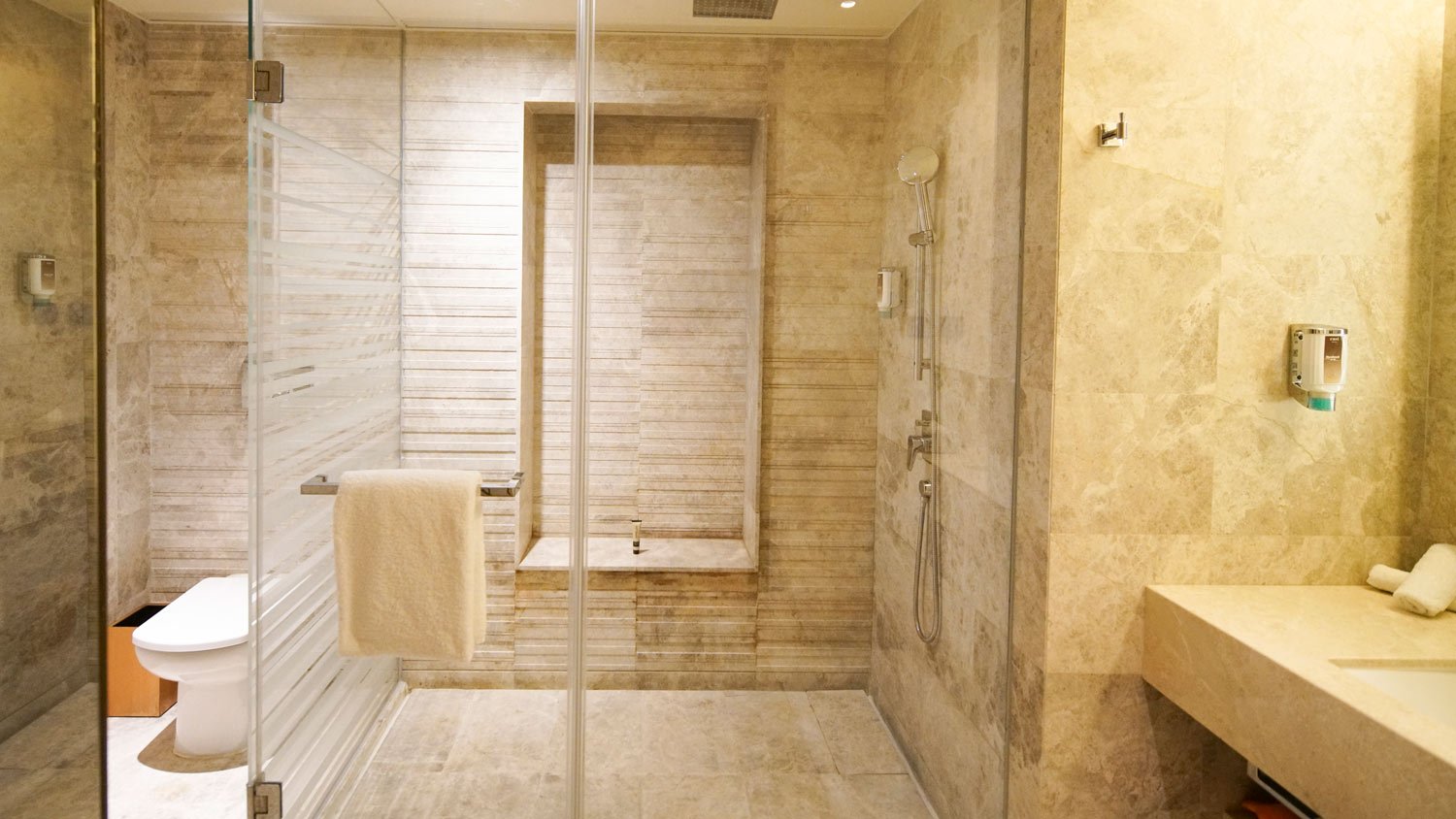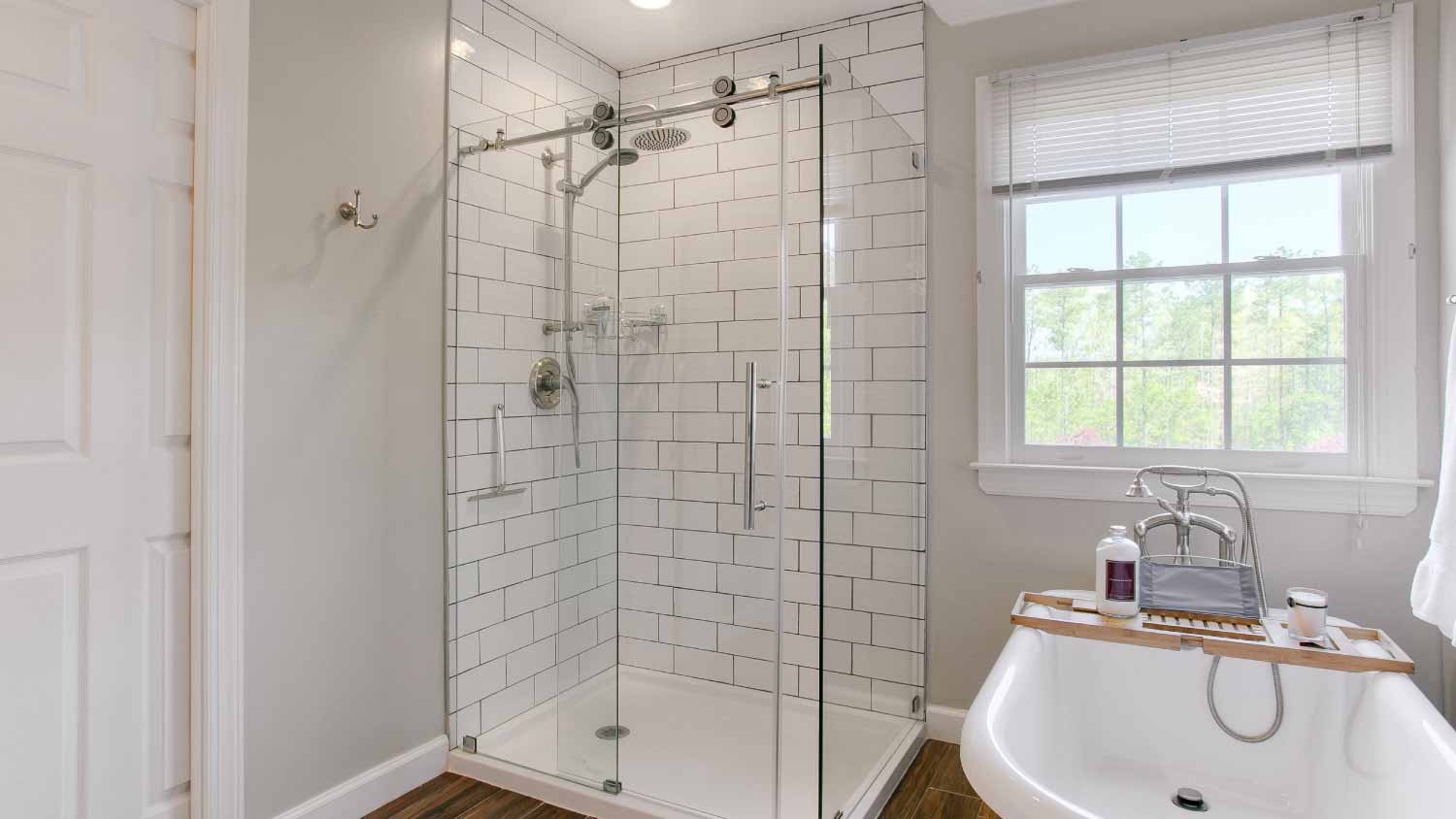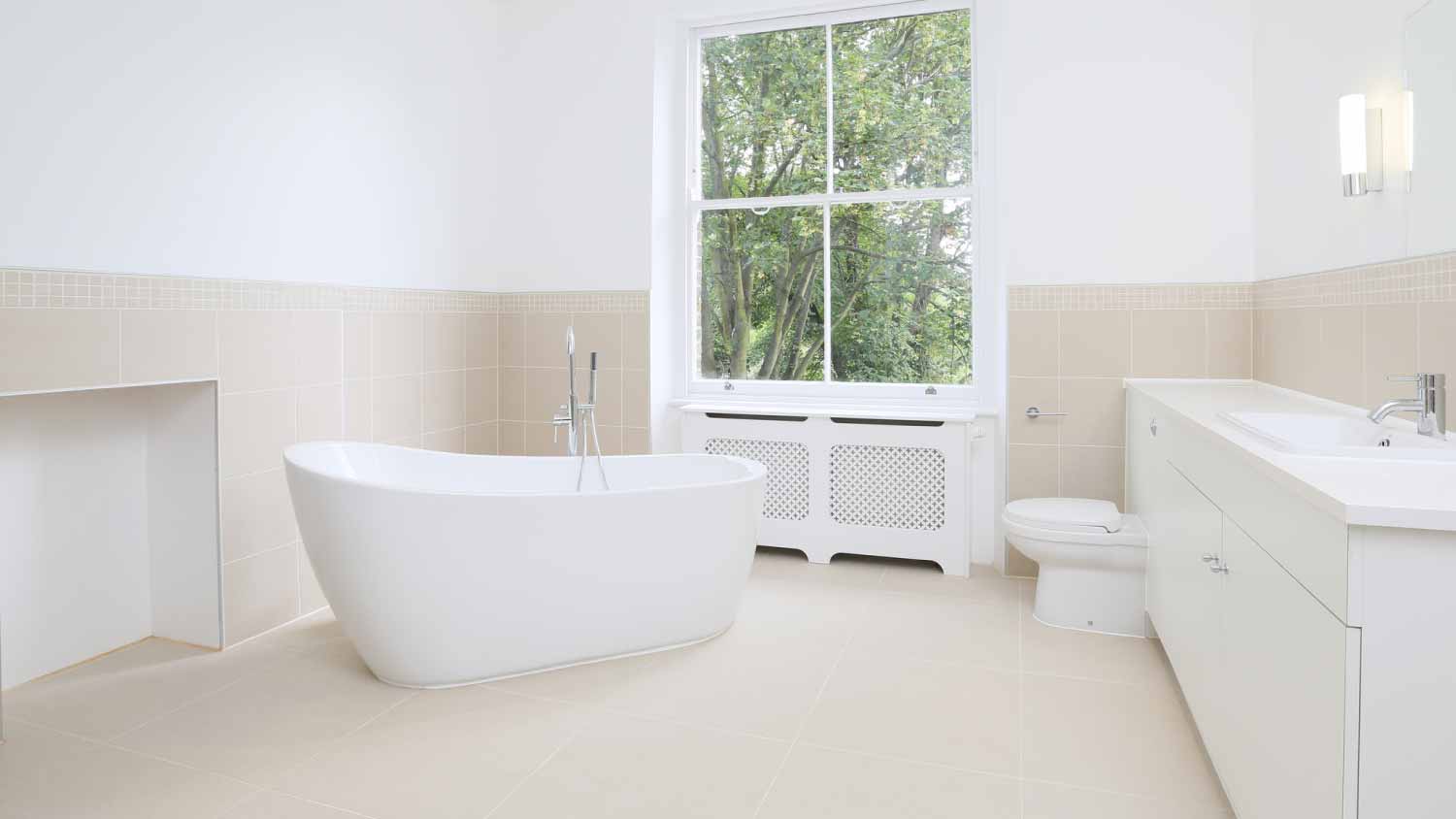Which Shower Door Style Is Right For Your Bathroom?
The perfect shower door not only keeps the floor dry, but it adds style and interest to your bathroom


Many people say they think their best thoughts in the shower; it makes sense. If you build it right, it’s the perfect relaxation spot in your home because it pampers you like a five-star hotel spa. But to get there, you’ll need to know a few things—such as the exact dimensions of the entire space to avoid hitting the toilet or sink with every swing of the shower door.
You also need to know your max budget and if you’ll be one of those people who finds cleaning glass every few days meditative. Only after you’ve answered these questions can you safely weigh in on the great frame vs. frameless shower door debate.
Shower Door Costs
When you’re researching shower doors, keep in mind how much it costs to install a glass shower door. The typical range for one is between $540 and $1,320. The price increases depending on the size of the shower door, the type (framed, frameless, hinged, sliding), and customizations like frame color and glass features.
Shower Door Types: Hinged, Sliding, Framed, Frameless
You have your inspiration photos ready to go, but before shopping for your new shower door, it's helpful to understand the differences between the options because the space and layout of your bathroom might not accommodate every style.
Shower doors are either:
Hinged, to swing or pivot
Sliding, to shift horizontally, left and right
Shower doors are also either:
Framed, with metal supports
Frameless
For more clarification, your perfect hinged or sliding door could be framed or frameless. It just depends if the manufacturer makes a shower door that fits your bathroom’s dimensions and matches your style and finish preferences.
Hinged Shower Doors

You’ll notice that hinged shower doors are also referred to as pivoting or swinging doors. Note that most hinged doors swing out into the bathroom, so they’re better for big spaces and stand-alone showers (without a tub).
If you want a shower that swings in and out, make sure the door is compatible with a double-hinged mount. Here’s a tip for double-hinged doors: after showering, always open the door inward; otherwise, all the water on the glass door drips onto the floor.
Consider hiring a local glass installer to measure and install the shower door. Don’t guesstimate the range of the swing, or you’ll risk hitting the vanity every time.
Neo-Angle Shower Doors
Sometimes, like in a historic home, bathrooms only fit into a corner space. Neo-angle shower doors work well because they create the most room in a tight spot. These shower doors usually have a door flanked by two angled panels. For reference, think of a diamond- or cone-shaped shower floor. The tip of the diamond points to the corner of the shower.
Bifold Shower Doors
Sort of a hybrid, a bifold (sometimes tri-fold) shower door combines the sliding function of bypass shower doors with the movement of pivot doors. A bifold door has two panels attached by hinges. When you pull the handle, the two panels fold inward toward each other, like a closet door in a bedroom, but in reverse. The door folds into the shower, saving space in small bathrooms.
Sliding Shower Doors
Sliding shower doors, also known as bypass doors, need the least amount of bathroom space of any shower door system because they don’t expand inside or outside the shower. Two or three panels usually slide past each other on tracks along the top and bottom of the door.
Many homeowners with existing bathtubs choose sliding doors because they come in a standard opening of 60 inches or wider, which matches the standard tub size. Or, they pick them if they have narrow bathrooms because they don’t take up a lot of room when open.
Round Shower Doors
Another good choice for corner showers and tiny bathrooms is the round shower door. The door doesn't swing into the shower; it opens on a track, like a typical sliding door. So, the curved glass gives you more room to soap and scrub. And, because there aren’t corners or seams, the entire shower is much easier to clean. Yes, please!
Framed Shower Doors
Framed glass shower doors are so common you’ve probably lived or stayed in a home with one recently. Homeowners like this style because it’s affordable and has a lot of customization for finishes.
You can choose from various metallic finishes that match other bathroom fixtures. Chrome and nickel are popular choices, but now, matte black has a strong following thanks to Chip and Joanna Gaines. If you like old-school bronze or brass, there are options for you too.
Frameless Shower Doors
You’re not the only one convinced a frameless shower is the way to go. The soaring popularity pops up in even the most casual Pinterest bathroom searches. Frameless doors add a ton of sparkle and show off fancy tile and stonework, not to mention the unobstructed views of the sculpture-like shower hardware that’s available today.
But, there are pros and cons of frameless shower doors. Although they’re gorgeous, the number one con is the price. The heavy-duty glass is more expensive than framed doors because it’s thicker (three-eighths to one-half inch) to support their own weight without metal frames. So you’ll need to budget for the extra shimmer and shine.
Semi-Frameless Shower Doors
If you have your heart set on a frameless shower door but want to stick to your budget, a semi-frameless shower door might do the trick. These types of doors have the top or the sides framed instead of every side framed like a traditional framed glass door.
Glass Finishes for Your Shower Door

Most people choose clear glass because it makes the bathroom look larger and bounces sunlight around for a light and airy effect. But, you don’t have to choose clear if you aren’t interested in mastering the art of squeegeeing, or you prefer more privacy. Frosted and textured glass adds privacy and is easier to maintain.
It’s clear to see you have plenty of shower door options. Make the most of your bathroom space with the one that works best for your day-to-day needs and budget.





- Pros and Cons of Frameless Shower Doors
- 6 Types of Glass Shower Doors to Elevate Your Bathroom
- 9 Types of Shower Enclosures That’ll Immediately Upgrade Your Bathroom
- Tub-to-Shower Conversion Ideas to Inspire Your Bathroom Renovation
- Shower Glass Coatings Keep Your Door Clean and Clear—Are They Worth It?
- 9 Shower Remodeling Ideas for an Instant Upgrade
- 6 Tips for Converting Your Bathtub Into a Shower
- 5 Causes of a Leaking Shower and How to Fix It
- How to Install a Shower Using Direct-to-Stud Kits
- 21 Striking Walk-In Shower Ideas















